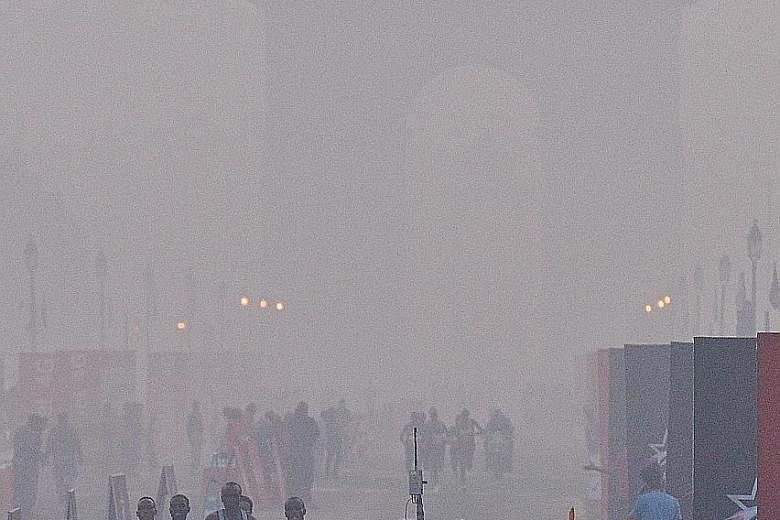The pollution level in India's capital city has dropped after nearly two weeks, but air quality in many areas of Delhi remained in the "very unhealthy" category.
The authorities on Friday rolled back several emergency measures to reduce pollution in the city, such as a ban on construction activity and a four-fold increase in parking charges to reduce exhaust emissions from private cars.
A new study, meanwhile, has suggested that the recent surge in Delhi's pollution was caused by a dust storm that blew in from the Arabian Gulf, to the west of Delhi.
The United States Embassy's Air Quality Index on Friday and yesterday showed that air quality remained in the "very unhealthy" category, with the fine particulate matter level remaining above 200 but less than 300 in most places.
The index had dropped from the hazardous or very severe category that saw levels going beyond 600 in many places.
The severe air pollution in Delhi, an annual affair, comes from a combination of factors: millions of cars on the road, frenetic construction work that adds to the swirling dust, and farmers in the neighbouring states of Punjab and Haryana burning crop stubble after the harvest. The cold winter air then traps the pollutants.
-
640 - micrograms per cubic metre
India's PM2.5 levels on Nov 8. PM2.5 is a measure of fine particulate matter linked to higher rates of chronic bronchitis, lung cancer and heart disease.
A new report from the state-run System of Air Quality and Weather Forecasting and Research (Safar) suggested that 40 per cent of the pollution level which resulted in a peak on Nov 8 was caused by a severe dust storm in the Gulf on Oct 29. It affected countries like Saudi Arabia and Kuwait.
The PM2.5 levels went above 640 micrograms per cubic metre on Nov 8. PM2.5 is a measure of fine particulate matter linked to higher rates of chronic bronchitis, lung cancer and heart disease.
"We have pointed out that on that particular day there was a peak, but the dust storm contributed to pollution for the entire spell. It must have happened across northern and western India but Delhi got highlighted. Now it has gone," said Dr Gufran Beig, chief scientist at Safar.
The National Green Tribunal lifted the ban on construction activities on Friday.
But the green court has asked the authorities to continue with the spraying of water on roads to tamp down the dust, and it has also extended the ban on the burning of crop stubble, a major source of the pollution.
Meanwhile, the Delhi Half Marathon, which the Indian Medical Association had suggested should be cancelled, is going ahead today. According to Indian media reports, 35,000 people have signed up, an increase of 1,000 runners from last year.

